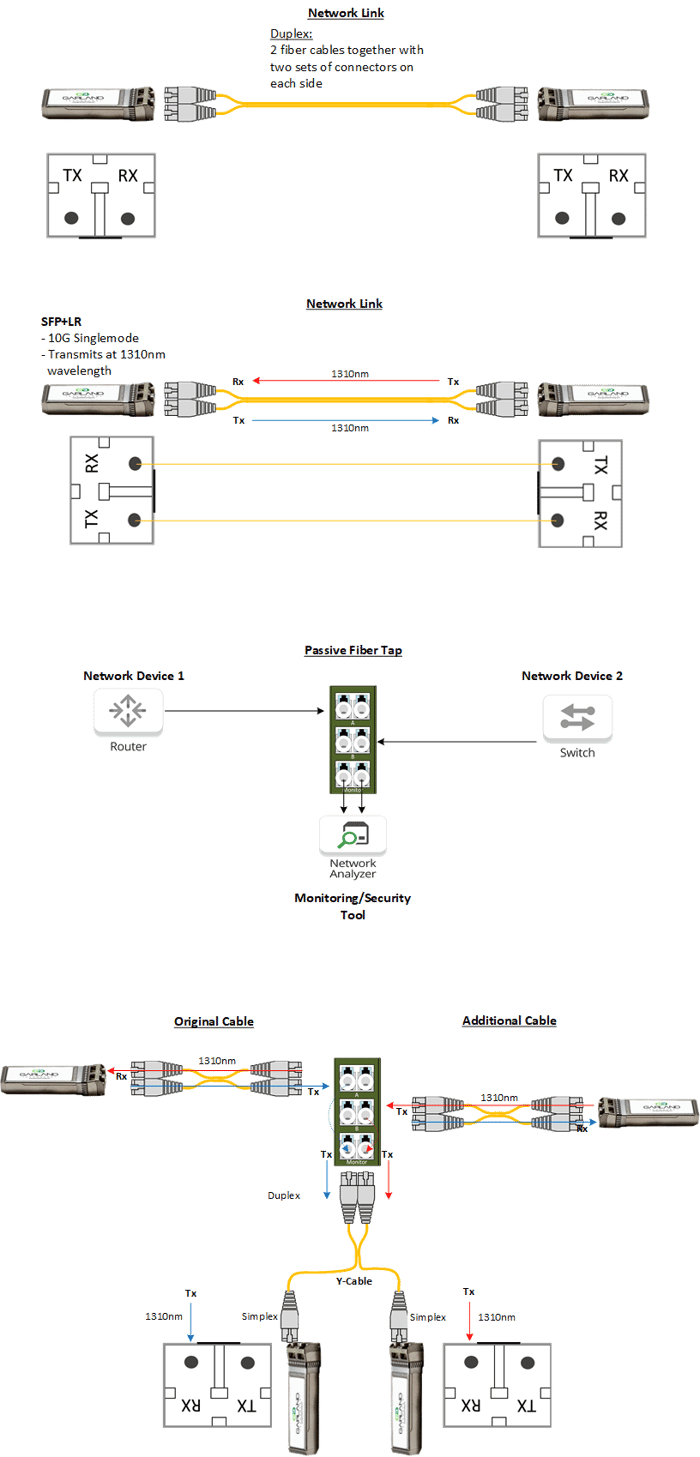Duplex Fiber Optic
Fiber Optic Solutions
Challenge: When do I use a Duplex Fiber cable?
Simplex and duplex are different kinds of communication channels, which provide pathways to convey information in telecommunications and computer networking. Which do I use for my fiber switch?
Solution
Duplex Fiber TAPs
A duplex fiber optic cable zipcord, consists of two strand fibers of glass or plastic, and it can be regarded as two simplex cables. This allows one fiber to transmit from point A to point B while the other fiber transmits from B to A. Therefore, both ends of a full-duplex system have both transmitters and receivers. One end is the transmitter, while the other end is the receiver and may be reversible (this is the opposite of simplex).
Example: Larger workstations, fiber switches and servers, fiber modems, Ethernet switches, backbone ports, and similar hardware require duplex cable.

